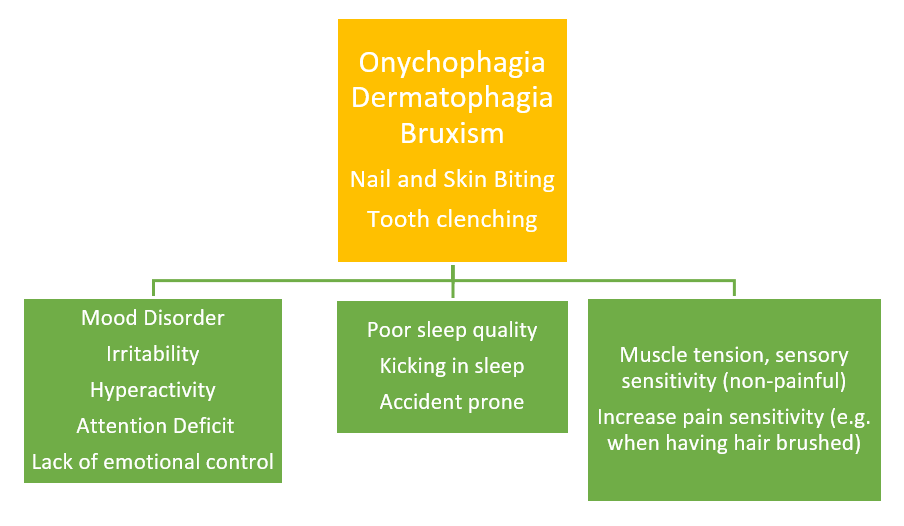
Congenital Central Sensitization Symptoms
The following is the symptomology of a single case of congenital central sensitization of which was not properly diagnosed until adulthood and was largely ignored and misunderstood by the medical community and family members. In all age groups, top hierarchy symptoms where the first signs of increased sensitivity. Adolescent increased sensitivities due to puberty. Adult increased sensitivities due to pregnancy.
Congenital Central Sensitization Symptoms in Childhood
(Disabled)

Social Issues: Lack of support, alienation of family members, impairment in making friends and maintaining friendships. Academic: Scores very high in enjoyed subjects and very low in subjects of non-interest.
Congenital Central Sensitization Symptoms in Adolescence
(Total & Permanently Disabled)

Social: Lack of support, alienation of family members, and severe impairment in making friends except those who also struggle from psychological issues.
Academic: Scores very high in subjects of interest, very low in subjects of non interest. Sleeps through some classes, sleeps on the bus to school, difficulty waking up for school, skips school to sleep, sleeps through classes of interest, begins failing classes or grades, requires summer school, placed on 504 programs for reduced homework, alternative schooling required.
Congenital Central Sensitization Symptoms in Adulthood
(Housebound Disabled)

Social: In ability to socialize due to lack of attention, difficulty with recall and eye contact, difficulty wanting to socialize due to pain and fatigue associated with socialization. The smell of other people is overwhelming due to olfactory sensitivities (e.g. perfumes, colognes, bad breath, and body odor). Zero libido or feelings of loneliness. Lack of desire to leave the comfort of home for outside painful stimuli. 99% of time spent in social isolation aside from companion animal.
Academic: Self-study at own pace only. Mainly reading due to the severity of attention deficit and distraction of fatigue, pain, and sensitivities.
Conclusion: Many of these symptoms and level of severity may have been avoided if the condition had been properly understood, diagnosed, and treated early on in childhood.
Current Status 15-Yrs Post-Diagnosis: Case subject no longer deals with anxiety or depression, but does infrequently deal with an emotional control deficit when pushed to perform outside of her comfort zone due to the severe pain and delirium caused by extended exposure to overwhelming stimuli (i.e. the emotional control deficit is stress induced). Pain is tolerable at rest, but can become severe with even minor stress. Exhaustion results in 22-hour rest (9-10 hours per day sleeping). 2 hours per day are devoted to personal care, hobbies (art therapy & critical thinking – reading and writing), physical therapy at home (strength and cardio), and online socialization. Time awake but at rest are spent watching movies and TV shows. As long at the case subject remains in relative sensory deprivation in her home and stays within her limitations in general, she has a high quality of life.
Reflection: Possible contributing factors for onset include congenital herbicide poisoning, possible trauma during fetal development, family history of non-diagnosed neurological issues. Other possible contributing factors in infancy/childhood include infant trauma to the forehead due to fall, and multiple ear infections in early childhood (ear tube surgery).

